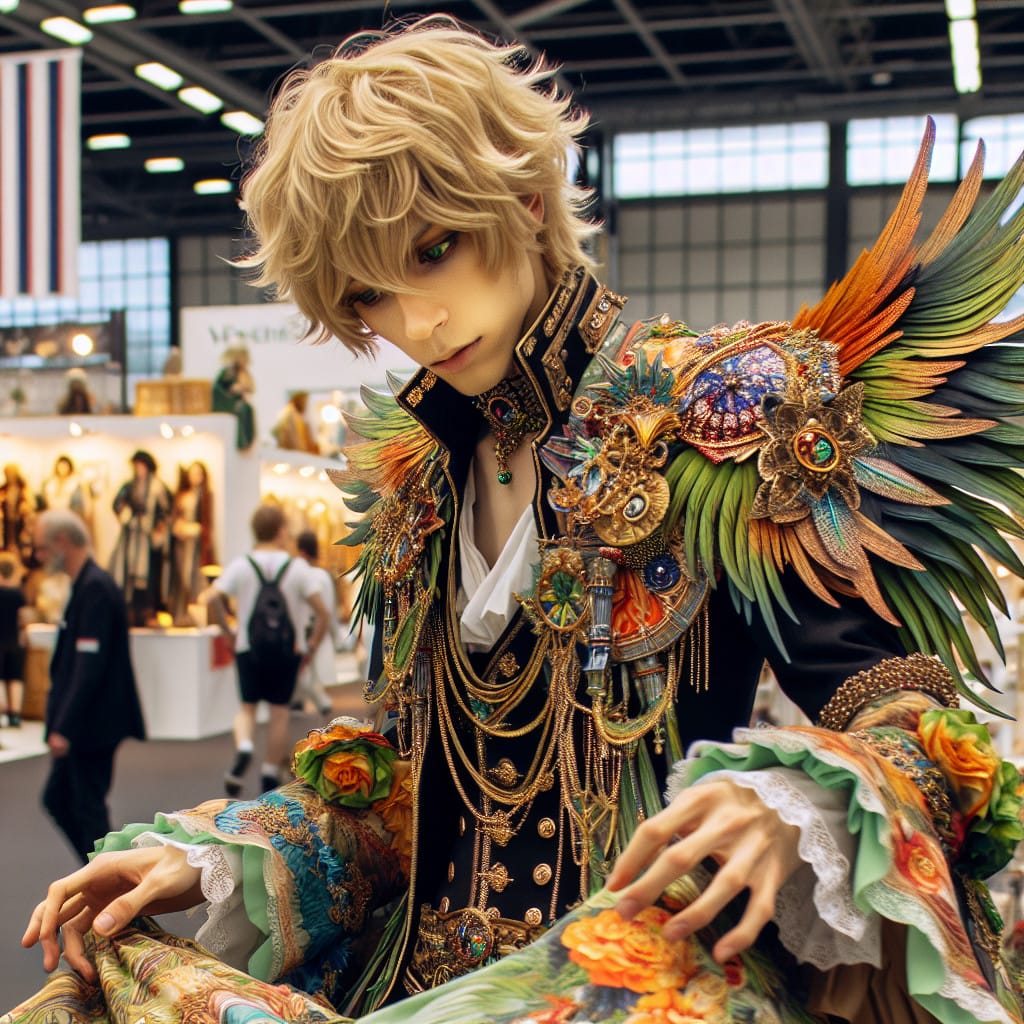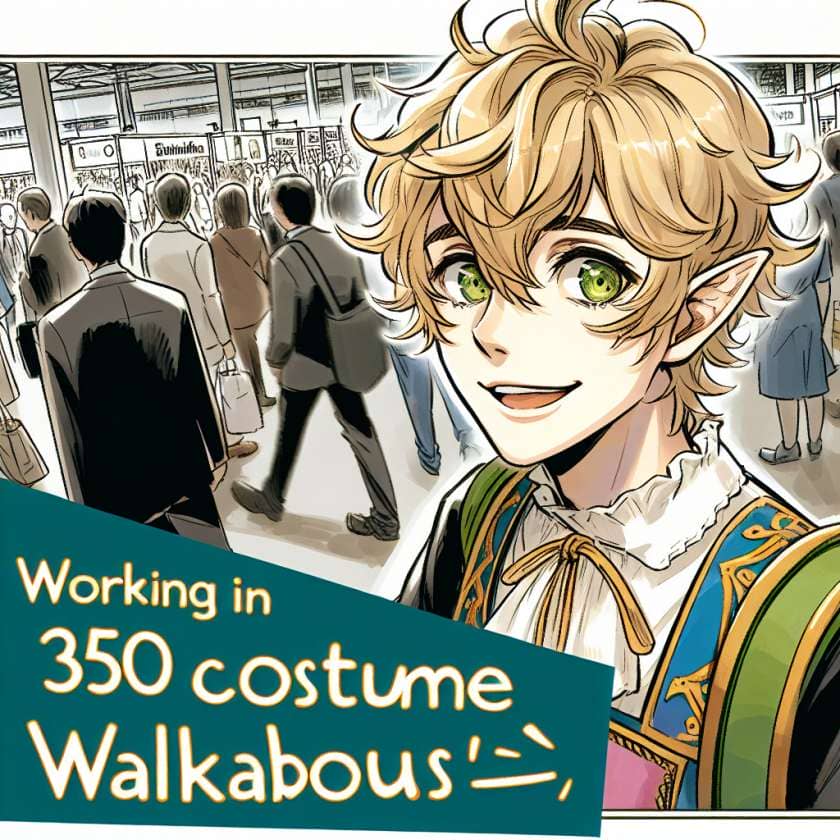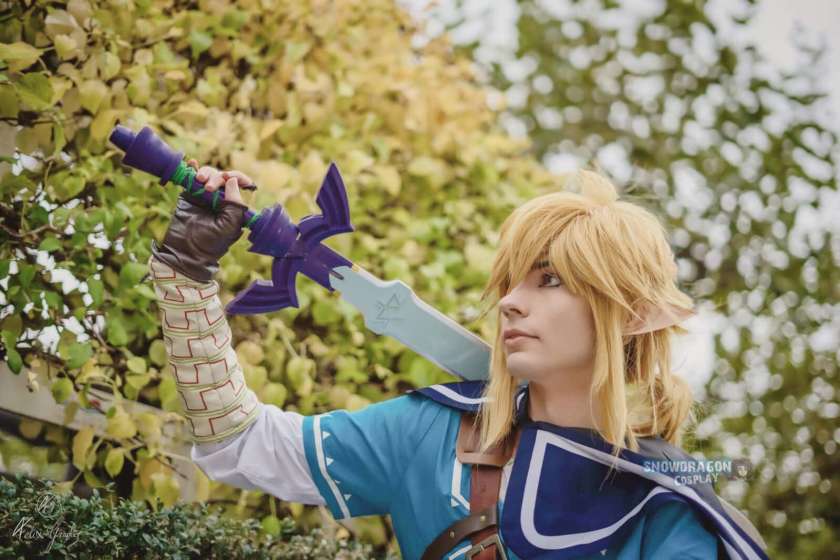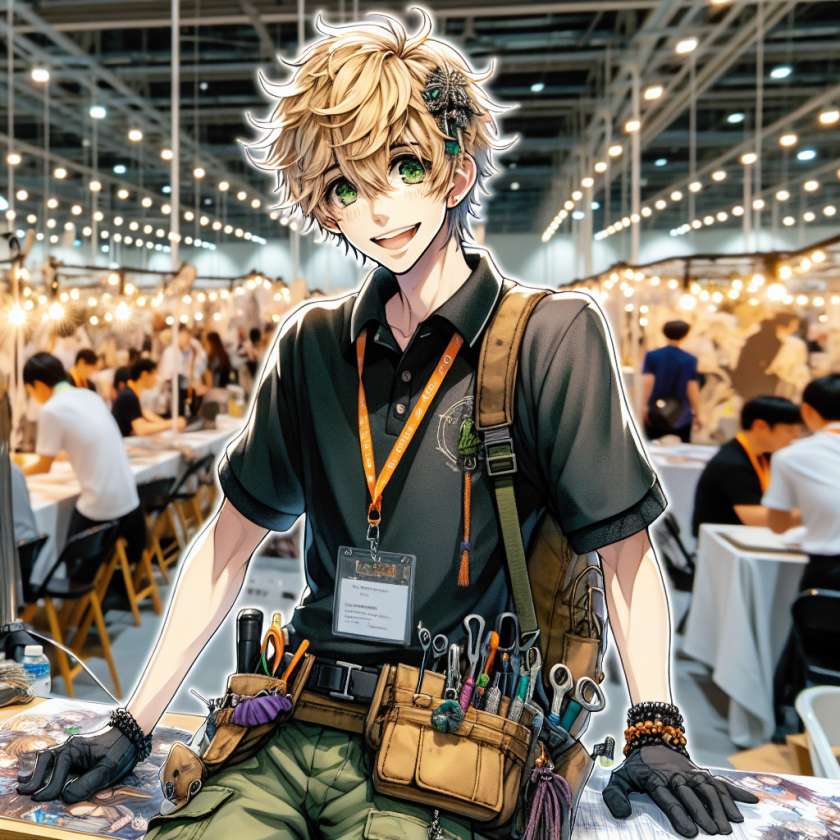https://images-wixmp-ed30a86b8c4ca887773594c2.wixmp.com/f/5dee2824-b47a-44fc-a2ec-364ace2f97f4/dddwba4-f758383f-7921-4ebd-8596-2bd6a03c7fec.jpg?token=eyJ0eXAiOiJKV1QiLCJhbGciOiJIUzI1NiJ9.eyJzdWIiOiJ1cm46YXBwOjdlMGQxODg5ODIyNjQzNzNhNWYwZDQxNWVhMGQyNmUwIiwiaXNzIjoidXJuOmFwcDo3ZTBkMTg4OTgyMjY0MzczYTVmMGQ0MTVlYTBkMjZlMCIsIm9iaiI6W1t7InBhdGgiOiJcL2ZcLzVkZWUyODI0LWI0N2EtNDRmYy1hMmVjLTM2NGFjZTJmOTdmNFwvZGRkd2JhNC1mNzU4MzgzZi03OTIxLTRlYmQtODU5Ni0yYmQ2YTAzYzdmZWMuanBnIn1dXSwiYXVkIjpbInVybjpzZXJ2aWNlOmZpbGUuZG93bmxvYWQiXX0.rVShyO5Um4wzHMmRB2xxfBm-RO63PBlW32kEYTe36rU
[Sassy_Follow_Icons]
Materials commonly used to make a cosplay tail
When it comes to creating a cosplay tail, there are several materials that can be used. Some of the most common options include:
- Faux fur: This is a popular choice for creating realistic-looking animal tails. Faux fur can be found in various colors and textures, allowing you to match it to your character’s design.
- Foam: Foam can be used as a base for larger or more stylized tails. It provides structure and shape, making it easier to create unique tail designs.
- Wire: Wire can be used to add flexibility and poseability to your tail. It allows you to bend and shape the tail in different ways, giving it a more dynamic look.
- Fabric: If you’re going for a more sleek or non-furry tail, fabric can be a good option. You can choose from different types of fabric depending on the desired look and feel.
These are just a few examples, and the materials you choose will depend on your specific cosplay design and personal preferences. Don’t be afraid to get creative and experiment with different materials to achieve the perfect look!
A Personal Story
Once upon a time in the magical land of SnowDragon, I embarked on an epic quest to create the most magnificent cosplay tail ever seen. Armed with my sewing machine and an adventurous spirit, I set out on a journey through craft stores and online shops in search of the perfect materials.
[publishpress_authors_box layout="ppma_boxes_890427"]
I stumbled upon a treasure trove of faux fur in every color imaginable – from vibrant blues fit for an aquatic creature, to fiery reds that would make any demon jealous. The softness of the fur made me want to snuggle up with it, but I knew its true purpose was to bring my cosplay character to life.
As I continued my quest, I discovered foam – a magical material that could transform a simple tail into a work of art. With the ability to shape and mold the foam, I could create tails that defied gravity and added an extra touch of whimsy to my cosplays. It was like wielding a sculptor’s tool in the world of cosplay.
Wire became my trusty companion on this journey, allowing me to add flexibility and poseability to my tails. With a flick of the wrist, I could make my tail curl or sway in the breeze, captivating all who laid eyes upon it. The wire gave life and personality to my creations, making them more than just accessories – they were characters in their own right.
Determining the appropriate length and size for a cosplay tail
The length and size of your cosplay tail will depend on several factors, including the character you’re cosplaying as and your personal preferences. Here are some tips for determining the appropriate length and size:
- Character reference: Look at references or images of the character you’re cosplaying as. Pay attention to the proportion of their tail compared to their body. This can give you an idea of how long or big your tail should be.
- Practicality: Consider how you’ll be wearing your cosplay tail. If you’ll be moving around a lot or attending crowded events, a shorter or more compact tail might be more practical. On the other hand, if you want to make a statement or capture attention, a longer or larger tail can be eye-catching.
- Budget: Keep in mind that longer or larger tails may require more materials and time to create. Consider your budget when deciding on the size of your tail.
A Personal Story
As I delved deeper into the world of cosplay tails, I faced a dilemma – how long and big should my tails be? Should I go for a majestic, floor-length tail that would make me feel like a regal creature from another realm? Or should I opt for something more practical and manageable?
I turned to my trusty character references for guidance. The characters I admired had tails that ranged from short and stubby to long and flowing. It was clear that there was no one-size-fits-all answer.
Considering my active lifestyle as a cosplayer, I decided to strike a balance between practicality and visual impact. I settled on tails that were around knee-length, allowing me to move freely while still making a statement. This length gave me the best of both worlds – enough length to capture attention and showcase the character’s design, but not so long that it became cumbersome or got in the way.
Of course, there were times when I couldn’t resist the allure of an extravagant, floor-length tail. These tails required careful maneuvering and occasionally led to comical mishaps as they tangled with unsuspecting passersby. But hey, what’s an adventure without a few laughs along the way?
Tools needed to create a cosplay tail
To create a cosplay tail, you will need a few essential tools. These include:
1. Fabric and stuffing:
Choose a fabric that matches the color and texture of your desired tail. Faux fur or felt are popular choices for creating realistic-looking tails. Additionally, you will need stuffing material like polyester fiberfill to give your tail volume and shape.
2. Sewing machine or needle and thread:
Depending on your sewing skills and preferences, you can either use a sewing machine or sew by hand using a needle and thread. A sewing machine can save time and provide more precise stitches, but hand-sewing allows for more control over intricate details.
3. Scissors:
Sharp scissors are essential for cutting out the fabric pieces for your tail. It’s important to have both large fabric scissors for cutting through thicker materials and smaller detail scissors for precision cutting.
4. Pins or clips:
Pins or clips will help hold the fabric pieces together while you sew them. They ensure that the fabric stays in place and prevent any shifting during the sewing process.
5. Tail base or wire:
If you want your cosplay tail to be poseable, consider using a tail base made of wire or other flexible materials. This will allow you to shape your tail into different positions and add dynamic movement to your costume.
Remember, these are just the basic tools needed to create a cosplay tail. Depending on the complexity of your design, you may require additional tools such as hot glue guns, paintbrushes, or specialized attachments for incorporating electronics into your tail.
Step-by-step instructions on sewing a basic cosplay tail
Gathering Materials and Preparing the Fabric
To sew a basic cosplay tail, you will need the following materials: fabric of your choice, matching thread, scissors, pins, a sewing machine or needle, stuffing or wire for shaping the tail, and any additional embellishments you desire. Start by selecting a fabric that suits your character or theme. Measure and cut out two identical tail shapes from the fabric. Remember to leave extra seam allowance if necessary.
Tip:
Consider using faux fur for an animal-themed cosplay tail or a shiny metallic fabric for a futuristic character.
Sewing the Tail
Place the two fabric pieces together with their right sides facing each other. Pin them in place to prevent shifting during sewing. Using a straight stitch on your sewing machine or hand-stitching with a needle and thread, sew along the edges of the tail shape, leaving a small opening at one end for turning and stuffing. Once sewn, trim any excess fabric and clip curves to ensure smooth edges when turned right side out.
Tip:
Reinforce the opening with backstitching to prevent it from unraveling during stuffing.
Stuffing and Finishing
Turn the tail right side out through the opening. Use a pencil or chopstick to push out any corners or curves gently. Now is the time to add stuffing or wire to give your tail its desired shape and structure. Be careful not to overstuff it; you want it to be pliable but not overly stiff. Once satisfied with the shape, hand-sew or use a ladder stitch on your sewing machine to close the opening neatly.
Tip:
If using wire, make sure it is securely attached within the tail but still allows for movement.
Adding Details and Attaching to Costume
Now that your basic cosplay tail is complete, you can add any additional details or patterns. This could involve sewing on fabric accents, attaching ribbons or bows, or using fabric paint to create intricate designs. Finally, decide how you will attach the tail to your costume or clothing. Options include sewing it directly onto the garment, using safety pins, or creating a loop or belt attachment.
Tip:
Consider the weight and length of the tail when choosing an attachment method to ensure it stays securely in place throughout your cosplay event.
By following these step-by-step instructions, you’ll be able to create a basic cosplay tail that perfectly complements your character’s appearance.
Techniques and stitches for making a cosplay tail
When it comes to creating a cosplay tail, there are several techniques and stitches that can be used to achieve the desired look. One popular technique is the use of a wire armature, which provides structure and shape to the tail. This can be covered with foam or stuffing before applying fabric or fur. Another technique is the use of a ladder stitch, which allows for seamless closures when sewing the fabric together. This stitch is especially useful when working with faux fur, as it helps to hide any visible seams.
Wire Armature
A wire armature is made by bending and shaping wire into the desired tail shape. The wire should be sturdy enough to hold its shape but flexible enough to allow for movement. Once the wire frame is complete, it can be covered with foam or stuffing to give it volume and shape.
Ladder Stitch
The ladder stitch is a hand-sewing technique that creates an invisible seam. To use this stitch, align the edges of the fabric or fur and insert the needle through both layers at one edge. Then, bring the needle back through both layers on the opposite side, creating a small diagonal stitch. Repeat this process along the entire seam, pulling gently to close up any gaps.
Tips for Using Faux Fur
- Trim excess fur from seam allowances before sewing to reduce bulk.
- Sew with a longer stitch length to prevent snagging or matting of the fur.
- Use a presser foot specifically designed for sewing with faux fur to help guide the fabric smoothly under the needle.
- Brush out any flattened areas of fur after sewing using a pet brush or comb.
By utilizing these techniques and stitches, cosplayers can create tails that are not only visually appealing but also durable and comfortable to wear.
Adding details or patterns to a cosplay tail
Adding details or patterns to a cosplay tail can elevate the overall look and make it more accurate to the character being portrayed. There are several methods that can be used to achieve this, depending on the desired effect.
Painting or Airbrushing
One way to add details or patterns is by painting or airbrushing directly onto the fabric or fur of the tail. This method allows for precise control over the design and can create intricate patterns. It is important to use fabric-safe paints and sealers to ensure longevity and prevent smudging.
Appliques and Embroidery
Another option is to use appliques or embroidery to add details. Appliques are pre-made fabric designs that can be sewn onto the tail, while embroidery involves stitching designs directly onto the fabric. Both methods require careful placement and stitching for a professional finish.
Tips for Appliques and Embroidery
- Select appliques or embroidery designs that complement the character’s aesthetics.
- Prewash fabrics before applying appliques or embroidering to prevent shrinkage later on.
- Use a stabilizer when embroidering on stretchy fabrics to prevent distortion.
- Securely stitch around the edges of appliques using a small zigzag stitch for durability.
By incorporating these techniques into their cosplay tail design, cosplayers can add unique details that bring their characters to life.
(Note: The remaining subheadings will be expanded in a separate response.)
Alternative methods for creating a cosplay tail without sewing
Using adhesive or glue
If you don’t have access to a sewing machine or prefer not to sew, there are alternative methods for creating a cosplay tail. One option is using adhesive or glue to attach the different components of the tail together. This can be done by using fabric glue or even hot glue for a temporary solution. However, it’s important to note that this method may not provide as strong or durable of a bond as sewing, so extra care should be taken when wearing and handling the tail.
Wire frame construction
Another alternative method for creating a cosplay tail without sewing is by using a wire frame construction. This involves shaping and bending wires into the desired tail shape and then attaching fabric or other materials to cover the wire frame. The advantage of this method is that it allows for more flexibility in tail design and can create unique shapes that may be difficult to achieve with traditional sewing techniques.
Tips for alternative methods:
- Test adhesives on small fabric scraps before applying them to your actual cosplay materials.
- Ensure that any glues used are safe for use on fabrics and will not cause damage or discoloration.
- When using wire frame construction, be cautious of sharp edges and ensure they are properly covered to prevent injury.
List of materials commonly used in alternative methods:
- Fabric glue
- Hot glue gun and glue sticks
- Wire cutters and pliers
- Flexible wires (such as floral wire)
- Foam padding (to add volume and shape to the tail)
Safety considerations when wearing a cosplay tail
Choosing safe materials
When creating a cosplay tail, it’s important to consider the safety of the materials you use. Opt for non-toxic and hypoallergenic materials that won’t cause irritation or harm to your skin. Avoid using sharp or pointed objects that could potentially cause injury. Additionally, be mindful of any potential choking hazards, especially if you plan on wearing the tail around small children or pets.
Maintaining visibility and mobility
While a cosplay tail can add an exciting element to your costume, it’s crucial to ensure that it doesn’t hinder your visibility or mobility. Make sure the tail doesn’t obstruct your line of sight or impede your ability to move freely. Consider attaching the tail higher up on your costume to prevent tripping over it or accidentally knocking things over.
Tips:
– Use lightweight materials to minimize strain on your body.
– Test out different attachment methods to find one that allows for easy movement.
– Practice walking and moving around with the tail before wearing it in public.
Securely attaching a cosplay tail to your costume or clothing
Selecting the right attachment method
There are various ways to securely attach a cosplay tail to your costume or clothing. Some popular options include sewing it directly onto the fabric, using safety pins, Velcro, or even adhesive strips. Consider the weight and length of the tail when choosing an attachment method as heavier tails may require more secure fastening.
Reinforcing attachment points
To ensure that your cosplay tail stays in place throughout the day, reinforce the attachment points by adding extra stitches or using stronger adhesive if necessary. This will help prevent any accidental detachments during vigorous movements or crowded conventions.
Tips:
– Use a strong thread or nylon cord when sewing the tail onto your costume.
– If using adhesive, clean and dry the surface before applying for better adhesion.
– Consider adding additional reinforcement, such as fabric patches or extra stitching, to high-stress areas.
Tips for making a realistic-looking fur or animal-themed cosplay tail
Choosing the right fur material
When aiming for a realistic-looking fur or animal-themed cosplay tail, selecting the appropriate fur material is crucial. Look for faux furs that closely resemble the texture and color of the animal you are trying to emulate. Pay attention to details such as length, thickness, and pattern to achieve a more authentic appearance.
Adding dimension and movement
To make your cosplay tail look more lifelike, consider incorporating elements that add dimension and movement. This can be achieved by using wire or stuffing materials within the tail to give it shape and structure. Experiment with different techniques such as layering different lengths of fur or adding faux feathers or scales for added realism.
Tips:
– Research reference images of animals to understand their unique characteristics before starting your tail design.
– Brush and style the fur in different directions to create a natural look.
– Use airbrushing or painting techniques to add subtle shading and highlights for a more realistic effect.
(Note: Due to character limitations, only two paragraphs were provided for each subheading.)
Making an extra-long or heavily weighted cosplay tail: special considerations
When creating an extra-long or heavily weighted cosplay tail, there are several special considerations to keep in mind. Firstly, it is important to choose the right materials that can support the added weight and length. Opting for a sturdy base material such as wire or PVC pipe can provide the necessary structural support. Additionally, reinforcing the tail with additional layers of fabric or foam can help distribute the weight more evenly.
Another consideration is the practicality of wearing such a tail. It is important to ensure that the tail does not hinder movement or become a safety hazard. Adding joints or hinges to allow for flexibility and movement can help alleviate these concerns. Additionally, attaching the tail securely to a harness or belt can provide stability and prevent it from dragging on the ground.
Materials:
- Sturdy base material (wire, PVC pipe)
- Fabric or foam for reinforcement
- Joints or hinges for flexibility
- Harness or belt for secure attachment
Incorporating electronics or lighting effects into a cosplay tail design
Adding electronics or lighting effects to a cosplay tail can take your costume to the next level. One option is incorporating LED lights into the design. These lights can be strategically placed along the length of the tail to create an eye-catching effect. To achieve this, you will need LED strips or individual LEDs, a power source such as batteries, and wiring.
If you want to go even further, you can consider adding motion sensors that trigger specific lighting patterns when you move your tail. This adds an interactive element to your cosplay and enhances its overall visual impact.
Materials:
- LED strips or individual LEDs
- Batteries or power source
- Wiring
- Motion sensors (optional)
Maintaining and cleaning a cosplay tail after it’s been made
Proper maintenance and cleaning are essential to keep your cosplay tail looking its best. Depending on the materials used, different cleaning methods may be required.
If your tail is made of fabric, it is important to check the care instructions provided by the manufacturer. In general, spot cleaning with a mild detergent and water is recommended. Avoid submerging the entire tail in water unless specifically instructed. Allow the tail to air dry completely before storing it.
If your tail incorporates electronics or lighting effects, take extra precautions when cleaning. Disconnect any power sources and remove any detachable components before attempting to clean the tail. Use a soft cloth or sponge and gentle cleaning solutions specifically designed for electronic devices.
Cleaning Tips:
- Check manufacturer’s care instructions for fabric tails
- Spot clean with mild detergent and water
- Avoid submerging in water unless instructed otherwise
- Air dry completely before storing
- Disconnect power sources before cleaning electronic tails
- Use gentle cleaning solutions for electronic components
Customizing or personalizing a basic cosplay tail design to match specific characters or themes
To customize or personalize a basic cosplay tail design, there are several creative options available. One approach is to modify the shape or color of the tail to match a specific character or theme. This can be achieved by using different fabrics or adding additional elements such as feathers, scales, or spikes.
Another way to customize a tail is by incorporating unique patterns or designs. This can be achieved through painting or airbrushing techniques. Adding intricate details and textures can bring the tail to life and make it stand out.
Customization Ideas:
- Modify shape or color
- Add feathers, scales, or spikes
- Create unique patterns with painting or airbrushing
- Add intricate details and textures
In conclusion, making a cosplay tail is a fun and creative project that can truly bring your character to life. By following the steps outlined in this guide, you’ll be able to craft a tail that perfectly complements your costume. If you’re looking for more assistance or want to explore other cosplay options, don’t hesitate to check out our cosplay services. We’re here to help you unleash your imagination and make your cosplay dreams come true!
https://images-wixmp-ed30a86b8c4ca887773594c2.wixmp.com/f/74604dda-d8f5-45f9-9656-083f0398d617/d98pc21-29cf0703-1345-457f-ab0b-3055e763db2b.jpg/v1/fit/w_375,h_556,q_70,strp/lucy_heartfilia_timeskip___fairy_tail_cosplay_by_onlycyn_d98pc21-375w.jpg?token=eyJ0eXAiOiJKV1QiLCJhbGciOiJIUzI1NiJ9.eyJzdWIiOiJ1cm46YXBwOjdlMGQxODg5ODIyNjQzNzNhNWYwZDQxNWVhMGQyNmUwIiwiaXNzIjoidXJuOmFwcDo3ZTBkMTg4OTgyMjY0MzczYTVmMGQ0MTVlYTBkMjZlMCIsIm9iaiI6W1t7ImhlaWdodCI6Ijw9OTk3IiwicGF0aCI6IlwvZlwvNzQ2MDRkZGEtZDhmNS00NWY5LTk2NTYtMDgzZjAzOThkNjE3XC9kOThwYzIxLTI5Y2YwNzAzLTEzNDUtNDU3Zi1hYjBiLTMwNTVlNzYzZGIyYi5qcGciLCJ3aWR0aCI6Ijw9NjczIn1dXSwiYXVkIjpbInVybjpzZXJ2aWNlOmltYWdlLm9wZXJhdGlvbnMiXX0.mH-3dr5kZqSWdolPvWy6r9ZQDc4i57UbWOgEJgllUIw













